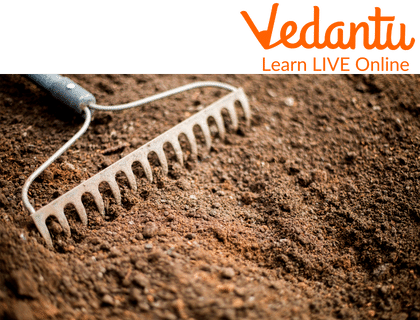




Soil and Its Types
What is soil? Soil is commonly referred to as the naturally occurring organic matter found on the earth's surface. It is mainly composed of minerals, nutrients, water, other inorganic particles, and some remains of plants and animals.
There are different types of soil, and they are classified primarily based on the size of the particles and the percentage of particles present in them—the three primary types of soil based on their texture are sand, loam, and clay.
Other types of soil are based on the percentage of particles, resulting in more mixed soil types: loamy sand, sandy soil, silty soil, etc. Apart from these, soils are also classified based on their colour – red, black, and brown soil.
What is Sandy Soil?
Sand or sandy soil comprises the smallest or finer particles of weathering rocks. This soil is known as the worst type of soil for agriculture and plant growth as it has very low nutritional value and poor water-holding capacity.
This soil is mostly found in arid to semi-arid regions of western Rajasthan, southern Haryana, southwestern Punjab, and northwestern parts of Gujarat, and along the eastern and western coasts of India.

Sandy Soil
Constituents of Sandy Soil
Sandy soil is also called "light soil". Generally, sandy soil is composed of 35% sand and less than 15% silt and clay. Sand is mainly small pieces of eroded rocks that have a gritty texture. In sandy soils, most soil pore diameters are larger than 2 mm.
Properties of Sandy Soil
Sandy soil is less fertile as it contains less humus.
Sandy soils have the fastest and greatest water drainage, and the least water retention.
Sandy soil is well-aerated and has low water absorption.
Sandy soil particles are weakly compacted (loose).
10 Uses of Sandy Soil
The uses of sandy soil are numerous in different regions. The following are the uses of sandy soil:
Agricultural requirement.
Easy Drainage - Sandy soils have great drainage properties. It comes off easily and quickly. It is used to improve the drainage of the soil.
Construction - Sandy soil is not sticky. It is inconsistent. It has a light and loose structure. Hence it can be easily used for construction work.
Foundation - The sandy soil provides the basis for the foundation on the marshy land.
Beauty - Sandy soils start from a sandy surface almost like beaches. It enhances the beauty of the beach.

Sandcastle at the Beachside
Abrasive Properties - Sandy soils have very good abrasive properties.
Small Settlements - Sandy soil has fewer settlements because it does not undergo consolidation over time. In addition, it has immediate settlements.
Changing pH - The pH level of sandy soil can easily change the pH level of the soil, like clay. The pH level of sandy soil is 7.00 to 8.00.
Others - Sandy oil is used to reduce the velocity of the water. It also helps in percolating the soil and raising the water level.
Uses of Sandy Soil in Agriculture
Sandy soils are generally dry, nutrient-dense, and fast-draining. It is used for planting and cultivation. For useful vegetables like potatoes, grams, tomatoes, etc., a minimum percentage of this soil is required for a given period. The percentage varies from vegetable to vegetable. The sandy soil also provides good land for the farmers to collect the fallen nuts.
Solved Questions
1. State the characteristics of sandy soil.
Sandy soils essentially consist of small particles produced by weathering rocks. It is also very low in nutrients and poor at holding water, which makes it one of the worst types of soil for agriculture.
2. Write True or False.
Sandy soil is very good for agriculture and plant growth. - False.
Sandy soil has the smallest particles of rock. - True
Learning by Doing
Kids Activity: What grows best?
Bring different types of soils, such as topsoil, clay, and sandy soil (or even sand). It's mandatory. You can get these soils from a nursery or gardening store.
Ask students to plant seeds in each type of soil and see how they grow. Which soil is best for plants? Which soil is the worst? If possible, try experimenting with different seeds, such as grasses, flowers, and vegetables. Different plants grow best in different types of soil.
Summary
This chapter discussed the uses of sandy soil. As we know, sandy soil is different from other soils, and has many uses. We have already read many of them, which is quite interesting.
FAQs on Uses of Sandy Soil
1. Which soil is better for growing coconuts and melons?
Sandy soil is considered better for cultivating coconut and melon.
2. How does sandy soil form?
Sandy soils are usually formed by the breakdown or fragmentation of rocks such as granite, limestone, and quartz.
3. Name the soil with the highest percolation rate.
Sand is soil with the highest percolation rate.









